Dance with the Sign: Zimbabwean Pavilion at the 59th Venice Biennale
- Lifang Zhang
- May 10, 2022
- 8 min read
by Lifang Zhang

Kresiah Mukwazhi, Chembere Dzagumhana 315cm x 265cm, mixed media Installation (image courtesy of the author and artist)
Dance with the Sign
“Wee iyerere iye iye
Nyoka musango”
If you entered the long narrow alley by Santa Maria della Pietà at the eve of the biennale’s public opening, you would hear the legendary Zimbabwean musician Thomas Mapfumo repeating the lyrics over and over. If you accepted this invitation and turned in through the heavy wooden gate, you would find the Zimbabwean Pavilion embracing the profound darkness, the joyful noise, and the seething movements. If you saw an old or new friend who was already in the room and wanted to greet them, you would have to shoulder your way through the dancing crowd, making more effort than getting into any pavilion at Giardini. The typical white-cube spotlights were switched off, but the space was lightened up more than ever.

This PUNGWE night was among the many events taking place in Venice at this time. Yet it was a special one without any hierarchies or privileges, breaking the white-cube orthodoxy by transforming the exhibition room into a space of gathering and fun, of sharing and care, and of life and home. Designed by the pavilion’s curator Fadzai Muchemwa as part of the program, the PUNGWE was a party, an event, and a commune of people. Its idea of care and love is central to the thoughts of Muchemwa. PUNGWE is a shona word for vigil. According to the Zimbabwean sound artist and DJ of the night Robert Machiri, it is an active convergence through songs in overnights of wakefulness, as an act of mourning with deep spiritual commitment. The poster describes the night as “A PUNGWE in communion with Wallen Mapondera, Ronald Muchatuta, Kresiah Mukwazhi and Terrence Musekiwa”. Yet it was not easy to find the four artists who were among the people, with their drinks in hand, swaying; the director of Zimbabwean Nationally Gallery was dancing along their technician staff; the Kenyan curator Jimmy Ogonga was chatting with Fadzai Muchemwa; the writer and curator Simon Njami was moving slowly to return into the room; Bronwyn Katz, Phumulani Ntuli, among many other artists from the continent, were enjoying a moment of this vibe.

Kresiah Mukwazhi, Untitled 315 x 265 cm, mixed media textile (image courtesy of author and artist)
The artworks in the space became part of the vibe, deepening it, opening it, and extending it. A disco light placed on the top of Ronald Muchatuta’s mosaic installation animated the exhibition room with its ever-changing hues. The faces that cast from the artist himself remained silent and serious. But rather than ponder toilsomely on oneself, it seemed that the eyes were closed to enjoy a restful moment in music from home. On the opposite wall, Kresiah Mukwazhi’s mix-media textile was shining under the reflection of the light. The razzmatazz text “Power or Poverty?” revealed its own presence, conspicuously, protesting the question mark behind it. The other small light spotted on the title of the exhibition “I did not leave a sign?”. Next to it hung Wallen Mapondera’s work which is created from egg crates and calabash. A red waxed thread connected this work with the centre of the crowds, holding the pulse of this room. Terence Musekiwa’s ancestral sculpture on the cater-corner overlooked people on the move, with two hands open as if saying “Let’s dance with the sign”.
The space became spiritual when the song “Nyoka musango” (snakes in bush) was playing. People were deeply committed to the moment with their moves, singing and laughter. The snakes in Terrence Musekiwa’s installation and Ronald Muchatuta’s 10 meters’ drawing were also woke up. At some point, Ronald Muchatuta was called to unroll and unpack his work in another exhibition room. The story was different a day before when the team was worried about how the colour and the breaking tiles of the floor might disturb the appreciation of the artwork. But who cares about the floor now? People appreciated art in this imperfect space and at this “inopportune” moment. After all, Venice is just the venue, not the happening.
Squashed Expression, Righteous Opacity
Among the 80 National Participations in this version of the Venice Biennale, only 8 of them are from the African continent, with Uganda and Cameroon participating for the first time. Debates on the politics of representation continues among the African participants this year due to structural and financial challenges. Namibia pulled out its debut presence one week before the event as a result of the petition published online concerning the misrepresentation of national art scene, signed by over 300 individuals from the art community. The proposed Namibian Pavillion is organised by an Italian curator and consists solely of the ‘Lone stone Men of the desert’ sculptures known in the tourism industry. While some former participants such as Angola drop out this year, the new Cameroon National Pavilion presents two exhibitions in different venues. One is dedicated to NFTs and features 20 international artists, but none from Cameroon. Sandro Orlandi Stagl, one of the curators, also organised the similarly controversial Kenyan Pavilion in 2015, which consist of mostly Chinese and Italian artists.
The Venice city at this time is an epitome of geopolitics. While the permanent national pavilions in various architectural styles stand in Giardini with guarded access, most of the African pavilions spread out across the city, lone at different corners. The National Pavilion of Zimbabwe locates behind the Santa Maria della Pietà, not far from Piazza San Marco. Yet, due to the conditions of the space’s dimension, ceiling and floor, the process of installing became an extension of the everyday Zimbabwean experience of negotiation and improvisation.
Muchemwa responses to the theme “The Milk of Dreams” with “I did not leave a sign?”, a concept which is poetic yet not abstract, spiritual yet not surreal. It is a loaded expression about lost, survival, resistance, crisis, and love. The four selected artists all embed their work in the past and the present of their nation and themselves as individuals. They also encode their work with the symbolism rooted in their own realities, imaginations, and forms of knowledge. However, with the squashed space of expression and the hegemony of knowledge, their works and their art’s connection with the universal experiences somehow become opaque.

Ronald Muchatuta, The Zimbabwean Gaze I, 10m x 2.6m, mixed media Installation (image courtesy of the author)
The meaning of the human figures, the numbers, the animals, the layers, and their arrangements in Ronald Muchatuta’s The Zimbabwe Gaze I, would only be fully captured by close reading of details with information provided by the artist and through research. For example, the years as indication of important events in Zimbabwean history; the dog as political brutality; the clock of children’s faces as both the vulnerable and the hope in our time. Muchatuta invites the audiences to take off their shoes and step on the work to spend time and engage with it. Thus, the body becomes a medium and its movements become part of the knowing process and extension of the work. Even this does not happen, the 10-meter scroll of mosaic drawing would still capture your breath with its archival texture which creates a visual epic.

Terrence Musekiwa, Muera Nyoka, Mazai Acho, Dimensions Variable (image courtesy of the author and artist)
Terrence Musekiwa’s installation Muera Nyoka, Nemazai Acho explored the history of Kariba Dam constructed by the colonial state in the 1950s, located on the border of Zambia and Zimbabwe. Besides creating environmental disasters, this project also resulted in the displacement of local inhabitants of the region. Musekiwa uses 24 eggs made of different stones to symbolise the 24 demands made by the locals and ignored by the authority, and the snake is a symbol of the Rhodesian golf club. Coming from a linage of stone sculpture, Musekiwa approaches to the historical event from a spiritual dimension. In a broader context as a response to social issues, his work, according to writer Zoe Samudzi, “is an enduring warning of the dangers of extraction and ecological degradation, connecting the Tonga People’s response to the colonial construction of the disruptive Kariba Dama and the subsequent catastrophic flooding of the Zambezi River, to the climate change-animated devastation of record-breaking Idai in 2019. These forms are bearers of a long, long memory.”

Terrence Musekiwa, Mimvuri Mvuri, Dimensions variable, mixed media coloured silk helmets and wire (image courtesy of the author and artist)
“We Transform Our Path and Embrace the Chaos”
At noon on 23 April, the first day of the biennale’s public opening, the Jury presented the awards. Uganda, showing at Venice for its first time, got a special mention “in acknowledgement of their vision, ambition and commitment to art and working in their country. Acaye Kerunen in her choice of sculptural materials like bark-clothed rafia illustrates sustainability as a practice and not just a policy or concept”.
The “sustainability as a practice” also applies to several African artists who are exhibiting in Venice and more of those who are working from the continent. For example, Dickens Otieno in the Kenyan Pavilion works with discarded beer cans to create textile wall-hang installations. In Zimbabwean Pavilion, artists Wallen Mapondera, Kresiah Mukwazhi and Terrence Musekiwa work with found and collected materials that have been used in everyday life with non-art functions.
Most of Mapondera’s works in the exhibition are made from egg crates which are common in our home settings, and eggs for him are symbols of lives, birth, transformation, and also fragility. Beyond this series, Mapondera also use tents from the Operation Murambatsvina (slum cleaning), packaging cardboards of food commodity, found objects from local political events, and so on. Through a repeating and healing process, Mapondera assemblages the crates with different compositions, movements, and dynamics to create his symbolism of deep emotions and visual commentary of social events. Combining factors of both the accessibility of materials and artistic consciousness, Mapondera’s reincarnation of the defunct objects does not end in the exhibition space. With the material and cultural capital obtained in the global art system as an artist, he starts putting effort into creating collective art spaces and platforms with the art community home. The practice of sustainability is thus passed on to his peers and the younger generations.

Wallen Mapondera, Chisungo II, 180cm x 110cm x 110cm, egg crates (image courtesy of the author and artist)
The use of everyday objects is also philosophical. The artists often source the materials from their immediate environments, physically and thematically. The proximity of the materials makes their art maintain a close contact with social realities and also contributes to the meaning production of the artworks. In Kresiah Mukwazi’s work in this exhibition, bra is the prominent material. She collected these worn bras from families, friends, and women she knows, whose histories are attached to these items. Underwear is often considered private, and nude is the gazed object in art history. In African context, however, nakedness is also a form of protest. As the artist describes, a women would strip to her petticoats or get entirely naked to show she was pissed off. In a contemporary social-political context, naked protests of women can be traced to Wangari Maathai in Kennya, Leymah Gbowee in Liberia, Stella Nyanzi in Uganda, and the many more recent protests against gender-based violence in South Africa. Mukwazi uses the bras as a symbol of resistance. In her installation Chembere Dzagumhana, the bras are the women fighters in black and white with guns on shoulder, guarding the falling yet rising women in unity, struggle, and power.
Both Wallen Mapondera and Kresian Mukwazi created their works at the timing of their family loss last year. Terrence Musekiwa’s and Ronald Muchatuta’s works also channel messages to their ancestors. This is the sign. This is the Zimbabwean artists’ attending to legacies in order to transform the current path towards a better future. The PUNGWE is an eventful moment of cosmopolitanism and an open invitation to everyone to re-engage with our sign and with the possible “milk of dreams”. The curator Fadzai Muchemwa states:
“The journey has been an uneasy one. We have all suffered monumental losses, but what has remained has been our ability to transform continuously, a trait that identifies where we come from. We accept grief as a form of praise and celebration for what we have lost, and we grieve unapologetically in our way. We unwind the grief and anguish with no name and put aside groundless fearful moments. We love and embrace death. We accept death as our great teacher in the fullness of living in balance. We care for the living. We care for the dead. We care for the future.”
*all images by Lifang Zhang (c)
References:
I did not leave a sign?, catalogue of the National Pavilion of Zimbabwe in 59th Venice Biennale. 2022.
Lifang Zhang is a PhD candidate in Art History at Rhodes University. She is part of the Arts of Africa and Global Souths programme.











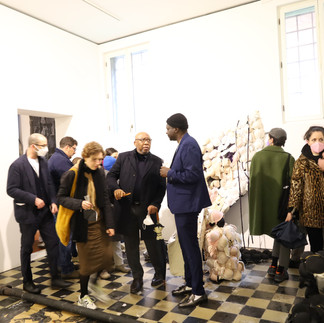









































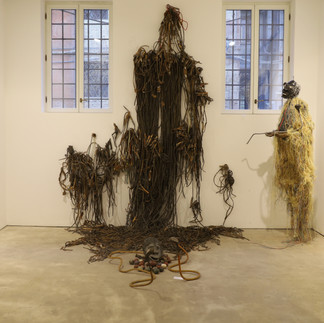

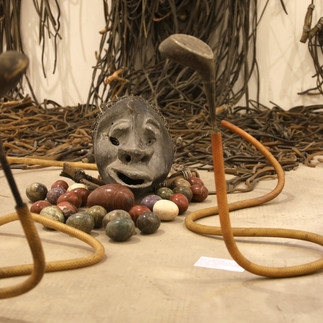


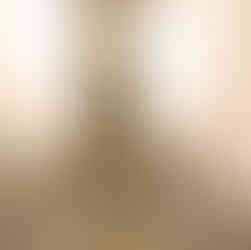


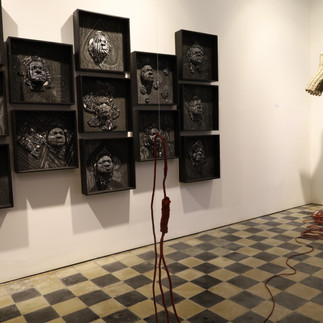




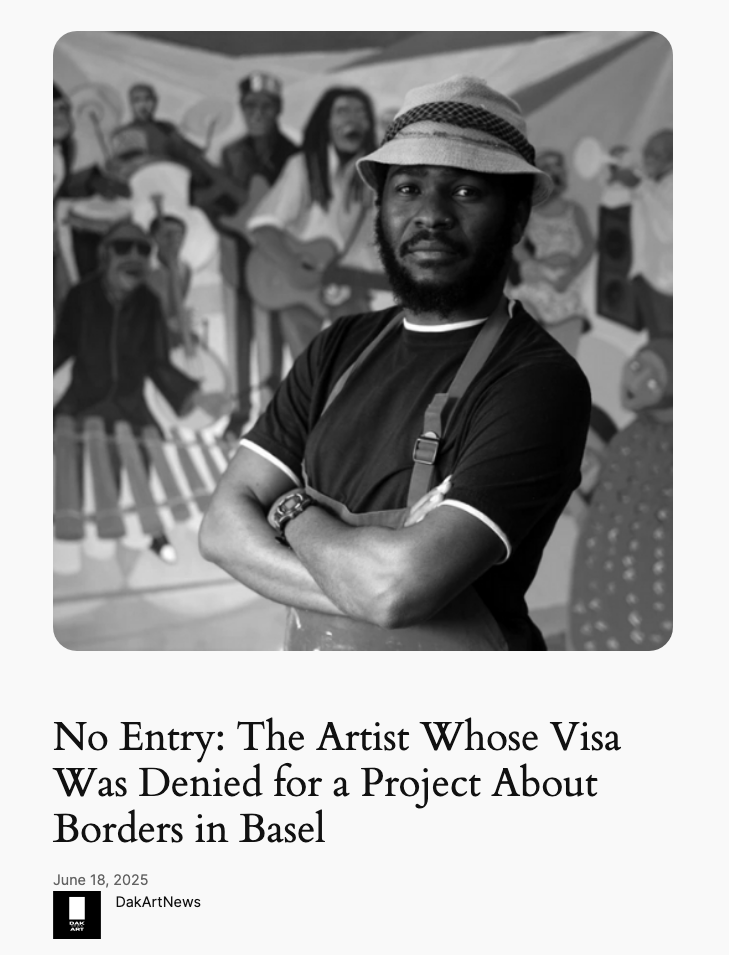
Comments